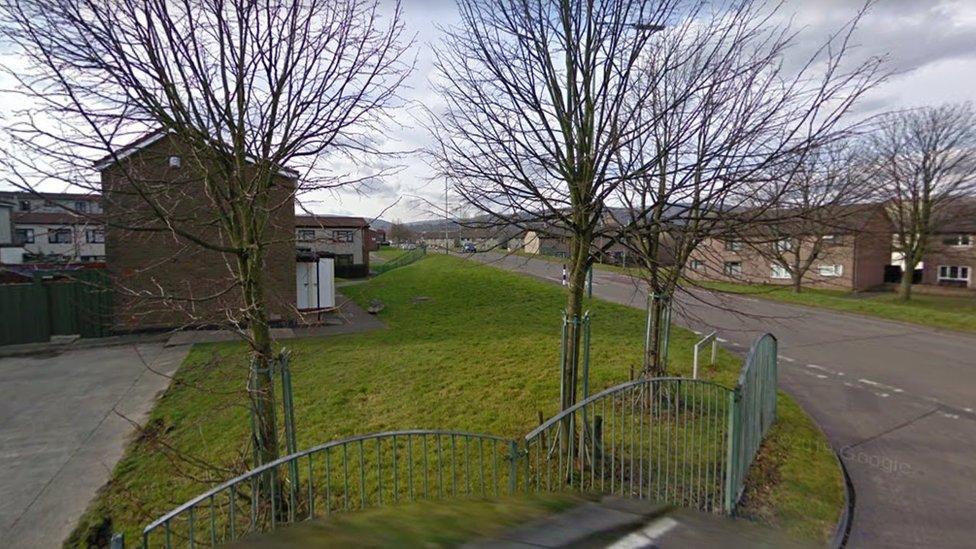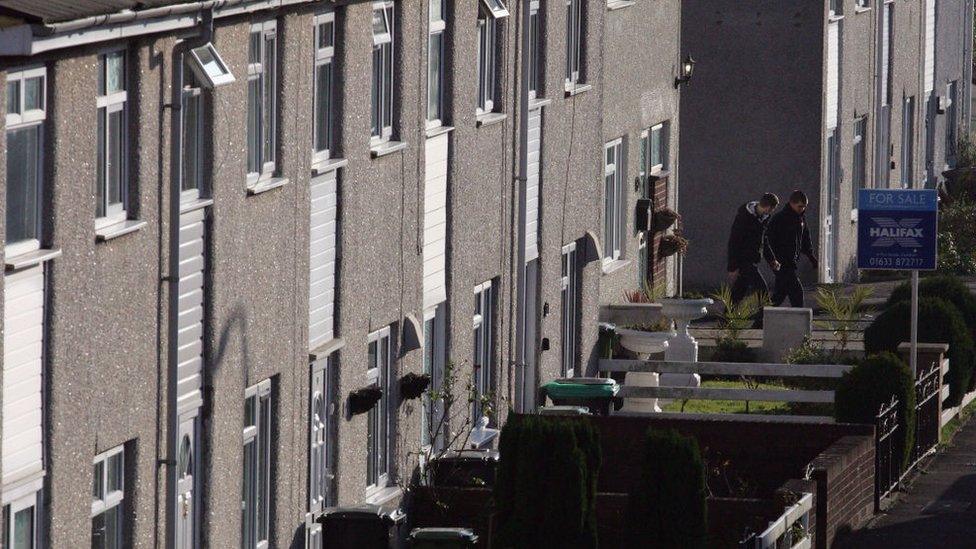Avoidable deaths twice as likely in deprived areas in Wales
- Published

Part of the Lansbury Park estate in Caerphilly was named as one of the most deprived areas
People living in the most deprived areas of Wales are more than twice as likely to die of avoidable causes than those in the least deprived, according to the Office for National Statistics.
In 2019, 39.4% of male deaths in the most deprived areas were avoidable, meaning treatable or preventable through public health intervention.
In the least deprived areas 18.9% of male deaths fitted that category.
The figures, just released, are for the year before the pandemic hit.
They highlight already existing inequalities.
There is a similar pattern for women, although a lower proportion of deaths were avoidable.
In 2019 27.6% of deaths among women in the most deprived parts of Wales were avoidable, compared with 12.4% in the least deprived.
The Office for National Statistics (ONS) says overall avoidable mortality rates in Wales are lower than they were in 2001, but adds that the speed of improvement has reduced and mortality rates have increased in some cases.
In particular there has been a widening of the gap between the least and most deprived men and women when it comes to respiratory diseases.
The gap was wider in 2019 than in 2001 and the ONS said the substantially higher rates could be linked to levels of smoking and exposure to air pollution.
How was deprivation judged?
The ONS used the Welsh Index of Multiple Deprivation to determine what it means by more and least deprived areas.
That data is published every five years and takes into account several determinants of deprivation, not just financial, including access to health services.
In 2019 the index found two electoral wards in western Rhyl in Denbighshire to be the most deprived, followed by part of the Lansbury Park estate in Caerphilly.
Radyr in Cardiff was the least deprived.
- Published14 February 2021

- Published12 June 2020

- Published14 May 2020

- Published27 November 2019
